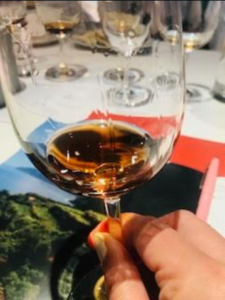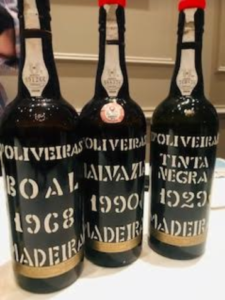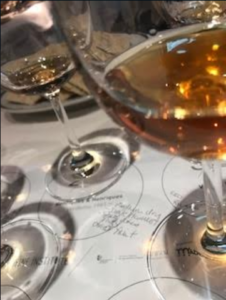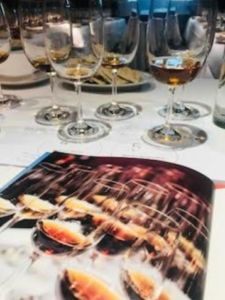Madeira: The Round-Trip Wine

Photo by Siobhan Chretien, Madiera Grand Tasting NYC
As an oenophile, I am a strong advocate for the importance of understanding indigenous beverages and their role in a country’s history. After recently completing a Madeira Wine Master Class in New York City, it reminded me of the important cross connection between food, drink, culture and travel. To write about Madeira Wine is to reveal its roots, culture and its traditions!

Mediera Island
Madeira is a beautiful island just 400 miles north of Africa in the Atlantic Ocean. A small region of only 732 KM(2), it forms a unique landscape of sharply elevated terrain and walled terraces that are known as poios. A part of Portugal, it has a reputation as an excellent tourism destination but its distinctiveness is also owed to the wine that bears its name.
In 1419 at the very beginning of the period of Portuguese discoveries, Madeira the island was found and so was the start of the wines history just 25 years after the islands colonization! Its history is marked by its passage in various parts of the globe.
Originally, the wine was placed in ships in large wooden barrels as a provision for sailors. It served a dual purpose where the crews would place the barrels in strategic locations to balance their boats on the rough seas. By the 17th century, its reputation grew and it became known as the ‘Round the World Wine’ (Vinho da Roda), branding that continues to this day. This is because, at the time, the Indies became a very important trading route and a huge market for Madeira for nearly two centuries.

Photo by Siobhan Chretien, Madiera Grand Tasting NYC
The transportation of Madeira to the Indies in the hold of ships left the barrels in much higher temperatures passing through the tropics for extended long periods. On certain occasions, the wine would return to Europe and it was verified that the journey enhanced the quality and complexity of the wine due to the accelerated aging. “Round the World” wine was born and on each ships return, the wine was sold at very high prices or traded for flour and oak wood to make the barrels.
Still today, this accidental discovery is used in the ageing of Madeira wine through the process that became known as “Estufagem” and was introduced as standard practice in the eighteenth century. Now, wooden barrels are stored in attics since attics get very hot in the summer. Thus, maintaining the same process from centuries earlier. Essential to this is the use of rain water. Madeira produced a sustainable solution long before the world was considering sustainable methods. When the island was discovered irrigation water was collected from the high elevations and transported by canals or levadas. This system that continues today.
At the time of Prohibition, between 1920- 1934, Madeira’s popularity in the US significantly dropped. France became and remains its number one export market followed by Germany. However, tourism to the island markets its next largest consumer over any other country. Evidence of the importance of the immersive experience that today’s intrepid travelers seek. The shift toward immersive, cultural experiences connected to history of a destinations food and drink is very important to the Madeira economy. The islanders treat the grape harvest as a gift, families participate and volunteer. These joyous, soulful residents love to share their history and their prized vinho! So drink up!

Photo by Siobhan Chretien, Madiera Grand Tasting NYC
There are only 8 producers of the wine in Madeira. Two of the earliest families still in operation starting in the 18th century. Consumption in the US has increased over 20% in the last few years largely due to avant-guard craft cocktail programs in large cities like New York. Sommeliers are also advocating the perfect pairings for Madeira wine on their menus. Need some food and wine pairing tips? Swordfish, tuna, mushroom, soufflés, foie-gras, pralines, chocolate and rich cheeses are ideal accompaniments.

Photo by Siobhan Chretien, Madiera Grand Tasting NYC
Pairings from @Siptips:
Madeira Sercial (Dry) – Fish and seafood. Mix with tonic water and some lemon on ice – a lovely spritz to get the appetite going.
Madeira Verdelho (Medium Dry) – Smoke game, mushrooms, duck, pâté. Drink straight.
Madeira Boal (Medium Rich) – Dry fruits, soft cheese, petit-fours, milk chocolate. Drink straight and if inclined, a cigar.
Maderia Malvasia (Rich)– Blue cheese, Portuguese cheese from Serra, Serpa and Ilha. Drink straight and if inclined, a cigar.
Madeira is drinkable at any age and never spoils (proven fact!) as the high concentration of the pureness of the alcohol used and the accelerated aging process prevents oxidization. This alone makes it a prized gift or possession to share for many years with loved ones!
Sip sip.
